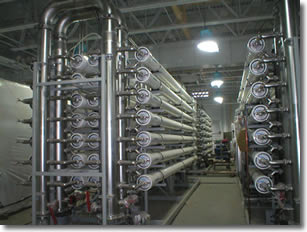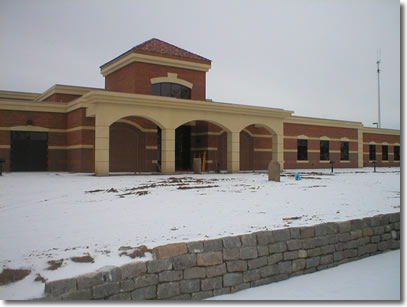Drinking Water Protection
- Drinking Water Protection Home
- About Us
- A-Z Index of Contaminants in Water
- Community Public Water Supply
- Drinking Water Grants and Loans
- Drinking Water Institute
- Drinking Water in Schools and Child Cares
- Drinking Water Revolving Fund
- Laws and Rules
- Noncommunity Public Water Supply
- Source Water Protection
- Water Operator and Certification Training
- Drinking Water Protection Contacts
Related Topics
- Annual Reports
- Drinking Water Risk Communication Toolkit
- Drinking Water Protection External Resources
- Fact Sheets
- Forms
- Invisible Heroes Videos: Minnesota's Drinking Water Providers
- Noncom Notes Newsletter
- Sample Collection Procedures (videos, pictures, written instructions)
- Waterline Newsletter
Related Sites
- 10 States Standards
- Clean Water Fund
- Health Risk Assessment – Guidance Values and Standards for Water
- Minnesota Well Index
- Water and Health
- Wells and Borings
Environmental Health Division
Minneapolis Ready for Ultrafiltration
From the Spring 2005 Waterline
Quarterly Newsletter of the Minnesota Department of Health Public Water Supply Unit, Waterline
A complete list of feature stories can be found on the Waterline webpage.
 The first significant phase in a decade-long process to upgrade Minneapolis Water Works and position the utility to meet emerging threats and more stringent standards is nearing completion. An ultrafiltration (UF) membrane plant at the system’s facility in Columbia Heights will be on-line this summer.
The first significant phase in a decade-long process to upgrade Minneapolis Water Works and position the utility to meet emerging threats and more stringent standards is nearing completion. An ultrafiltration (UF) membrane plant at the system’s facility in Columbia Heights will be on-line this summer.
Capable of producing up to 78 million gallons per day (MGD) during the warm-weather months, it will be the largest ultrafiltration system for drinking water in the United States and will enable Minneapolis to comply with increasingly tighter limits for microbial removal. In addition, the selected membrane system provides for removal of viruses and may deal with emerging microbes. The plant is set up to allow for future enhancements that could address endocrine disruptors.
In the wake of the Cryptosporidium outbreak that had occurred in Milwaukee in the spring of 1993, Minneapolis Water Works commissioned a feasibility study. “We looked at all of the available technologies to address our risks, which were based on log removal [percentage] needed,” said Adam Kramer, Director of Minneapolis Water Works. “The study included investigating ozone, UV [ultra-violet treatment], membranes, and a conventional plant. We viewed the risk in the source water, determined the log removal needed, determined the available removal from our existing facilities, determined the gap, looked at the treatment that would fill the gap, and then looked at the age of the infrastructure.”
From this analysis, along with the desire to retain soft water, the decision was made to go with membrane filtration. The upgrade will take place by constructing a new membrane ultrafiltration plant to replace the granular media filters at the Columbia Heights filtration plant and construction of a water treatment residuals lagoon. The overall cost of the project is $56 million, with the membrane system representing $16 million of it.
“We were postured in a perfect position to put in new technology,” Kramer added. “Experts from multiple national consulting firms concurred with that recommendation.
“If you’re going to something new, do you put in old technology or new? That’s what it boils down to.”
Minneapolis Water Works gets its water from the Mississippi River in Fridley, where it has both a filtration plant and a softening plant. Another filtration plant, built in phases from 1913 to 1918, is in Columbia Heights, approximately two miles away. Water from the river enters the softening plant and then goes to the filtration plants in Fridley or Columbia Heights. Some of the Fridley water goes straight into the distribution system. The rest goes to a reservoir in Columbia Heights and is mixed with the water there. Eventually, an ultrafiltration plant similar to the one now being built in Columbia Heights will be constructed in Fridley.
The existing filter plant in Columbia Heights, which uses ferric chloride as a coagulant with chlorine and ammonia added to the water, will serve as pretreatment for the ultrafiltration membrane system.
Membrane Options
Membrane filtration, which removes particles too small for conventional filters to remove, started in the 1960s with reverse-osmosis (RO) membranes for desalination. Since then, a range of less discerning membrane filters—nanofiltration, ultrafiltration, and microfiltration—became available, and these, along with RO, were the choices available to Minnesota.
Some of the advantages of reverse osmosis and nanofiltration, such as dissolved-solids reduction, weren’t needed by Minneapolis. Reverse osmosis would provide softened water, but since the utility already has a softening plant with a useful life remaining, it wasn’t considered necessary. Nanofiltration would have created problems with a large amount of wastewater, so the decision came down to microfiltration and ultrafiltration. Minneapolis, with its Peer Review Panel and Citizens Advisory Committee, opted for the latter, with emerging microbes and their size being the deciding factor.
“Cryptosporidium and Giardia are two to five microns. We were looking at the emerging microbes that are much smaller than that,” explained Kramer, who said they used surrogate viruses to determine pore size. “We specified and tested for a minimum of 4-log removal, which established the pore size, and that pointed to ultrafiltration.”
Kramer added that reverse osmosis remains an option for the future and one that likely will be employed if there is a problem with endocrine disruptors and pharmaceutical products, which enter the wastewater system and ultimately water sources, such as rivers, through excretion from humans. “We have, at the Columbia Heights plant, the piping and a place to have the UF become pre-treatment for the RO,” he said, “which would allow us to convert from an end-of-treatment to a pre-treatment for endocrine disruptors.” If and when this happens in both Columbia Heights and Fridley, Minneapolis will get rid of its softening facility.
Ultrafiltration Process
Many membrane systems use crossflow filtration, in which feed streams flow across the membrane rather than through it, as is the case with conventional filtration. With crossflow, the suspension to be filtered is pumped along the membrane surface to avoid fouling, and only a small portion of the stream is filtered through the membrane. However, energy consumption was a major concern with crossflow systems; as a result, a more energy-efficient concept, called dead end or semi-dead end, was developed. A dead-end system essentially operates like a coffee filter, eliminating all solids in suspension and retaining them on the membrane surface. Periodic backwashing removes those solids from the membrane surface. Once or twice a day, the membranes are exposed to a brief soak with chemicals present, called a chemically enhanced backwash, to keep the membranes clean.
“Crossflow would have some part of the stream continue past the membranes instead of a quasi dead-end system, which forces the stream through the permeable membrane, with that being the barrier to larger particles, including pathogens” explained Madalyn Epple, a regional sales manager for Ionics, which is responsible for the complete membrane system being installed at the Columbia Heights facility.
The ultrafiltration technology will use an Ionics UF membrane system containing more than 4,000 Norit X-Flow hydrophilic capillary (hollow-fiber) eight-inch diameter membrane elements. Dale Folen, the project engineer for Minneapolis Water Works, said the treatment process will consist of four trains with 10 units in each train. Each unit has 28 pressure vessels with four hollow-fiber modules inside each pressure vessel. “Water comes from feed pumps to the units,” he said. “The permeate, or treated water, goes down the train to the opposite end. All units in the train operate in parallel. The water goes through the membrane and then becomes permeate, exiting through a separate line. It operates in dead-end mode; the flow goes from the inside of the hollow fiber to the outside.”
“It’s an inside-out operation,” says Epple, noting that the stream is forced into the inside of the fiber from both ends of the membrane. “It then permeates through because the water molecules are small. Pathogens like Cryptosporidium, Giardia, and viruses are much larger than the pores of the membrane. Water passes through easily and anything larger than the pores of the membrane stays on the surface of the membrane until they are backwashed and the solids are removed from the system. All of this takes place at low pressure with an average net driving pressure of 5-10 psi [pounds per square inch].”
Epple added that a spiral-wound system, unlike hollow fiber, cannot be backwashed. “And it’s crucial in this industry to have that positive barrier to be able to verify the integrity of the system,” she said, referring to the ability to confirm that all fibers are intact.
Folen said that the units are taken out of service if the fiber is broken. “The plant is sized so that 36 units [of the 40 units] can meet 78 MGD, which is their design, so they can still meet full capacity even with some of the units taken out of service. A diffused-air test is used to monitor and confirm the integrity of the system.”
Backwashing occurs every 25 minutes and takes 45 seconds, according to Folen. “Backwash water, which is UF permeate, forces water in the reverse direction from the outside of the fiber to the inside,” he said. “Two trains can be backwashed simultaneously. The feed-pump system is set to a common pressure on the upstream end. Each unit does throttling and flow control depending on how dirty each unit is.”
For post-treatment, fluoride, chlorine, ammonia, and polyphosphate (for corrosion control) will be added.
Security
The plant will be constructed to meet the sometimes conflicting objectives of maintaining security while being accommodating to visitors. “With ultrafiltration a new technology, there will be a lot of people wanting to know about it,” said Folen, adding that they expect visitors from around the world. The facility will have a meeting room as well as displays of an ultrafiltration module and a teaching/learning area for tours. Closed-circuit cameras and televisions will also be available.
“For security reasons, we don’t want visitors to see the complete layout,” said Kramer. “If they want to see what the chemical storage room looks like, we bring it up on the screen. They can look through windows to see the plant, but we don’t want them to see the configuration.”
Adolfson & Peterson Construction of Minneapolis is the general contractor. Pioneer Power of St. Paul is the mechanical contractor. The electrical contractor is Gephart Electric of St. Paul. Black & Veatch Corporation of Minneapolis and Kansas City designed the plant. The team of HDR Engineering, Inc. of Minneapolis; Malcolm Pirnie, Inc. of Cleveland; and Separation Processes, Inc. of San Marcos, California assisted Minneapolis with the procurement of the ultrafiltration membrane equipment.
 |
|
A retaining wall in front of the new ultrafiltration plant consists of cobblestones from early streets in Minneapolis.
|
Of Interest
Go to > top.